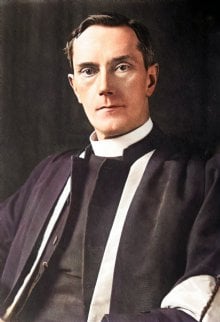"Prayer gives a man the opportunity of getting to know a gentleman he hardly ever meets. I do not mean his maker, but himself"
About this Quote
Prayer is traditionally seen as a means of communicating with the divine, a sacred space where individuals connect with their creator. However, William Ralph Inge suggests a more introspective dimension to prayer, that it primarily serves as a rare opportunity for self-encounter. Through the act of prayer, a person confronts the self in solitude, stripped of daily distractions, social roles, and the performative elements required by the outside world. Inge’s use of the word “gentleman” to describe oneself is both ironic and profound, highlighting the paradox that while we are always in our own company, we seldom truly meet ourselves.
Modern life is often characterized by relentless activity, noise, and external demands. Even moments of supposed rest, scrolling through a phone, watching television, engaging in idle conversation, keep us at a distance from our own inner thoughts and emotions. Authentic self-engagement requires focused stillness, honesty, and humility. Prayer, in its ideal form, fosters these qualities. Alone, unobserved, and speaking or contemplating in silence, a person stands exposed to the depths of their own conscience, desires, fears, and hopes.
Inge’s insight challenges the assumption that prayer is solely about reaching upward or outward to a divine presence; it can also be a process of inner navigation, a mirror held up to one’s soul. The “gentleman” one barely meets is the authentic self, often clouded by ego or overlooked in pursuit of external objectives. Through prayer’s reflective silence, an individual becomes reacquainted with personal truths that are easy to avoid: motivations, regrets, aspirations, and inner contradictions.
Therefore, prayer is not only spiritual communication, but also a rare discipline of self-knowledge. It is in these undistracted moments of inward attention that one may discover empathy, forgiveness, and acceptance, recognizing the seldom-visited inner landscape with fresh eyes, transforming, perhaps, both the self and the world beyond.
More details
About the Author
